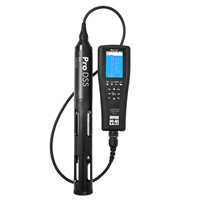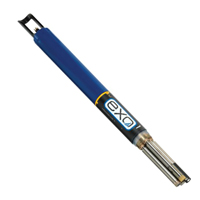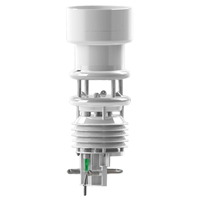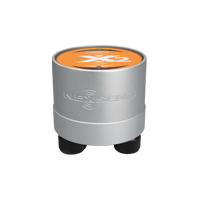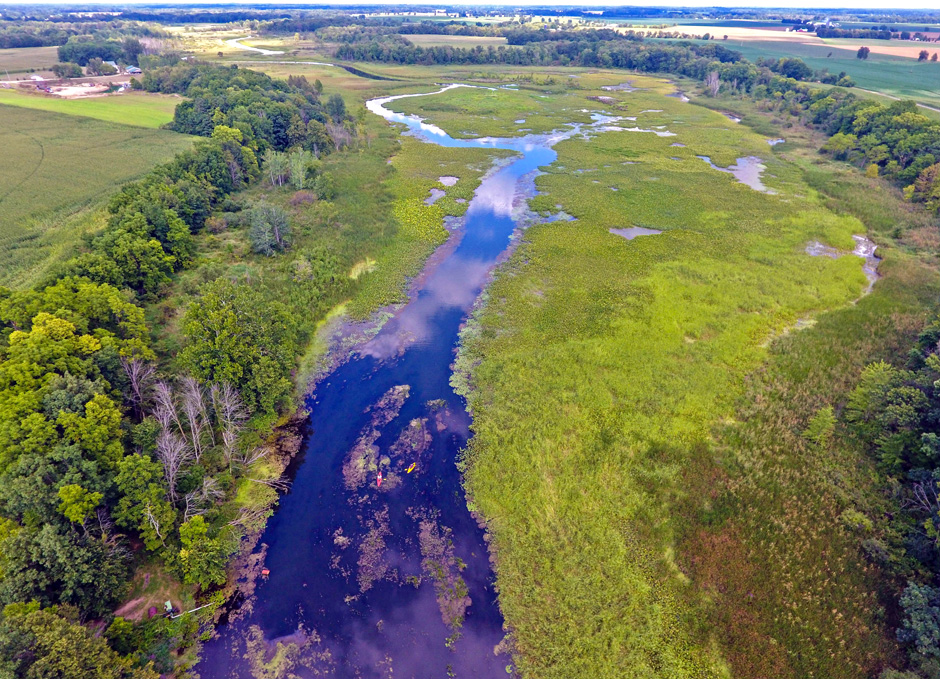 The Nottawaseppi Huron Band of Potawatomi (NHBP) is facing the future with a firm grasp on tradition and a mastery of new technology to handle rapid growth and changes. Recognized as a tribe by the US federal government in 1995, the NHBP employs thousands in western and central Michigan.
The Nottawaseppi Huron Band of Potawatomi (NHBP) is facing the future with a firm grasp on tradition and a mastery of new technology to handle rapid growth and changes. Recognized as a tribe by the US federal government in 1995, the NHBP employs thousands in western and central Michigan.
Since its inception, restoring its land which now spans over 1,000 acres and fostering environmental stewardship for the good of the tribe’s future and preservation of its past, has been priorities. The tribe expresses these priorities through the work conducted by its Environmental Department.
Challenge: A way of life under threat
Tradition connects the tribe and the land of the Pine Creek Reservation—located only about 15 miles south of Battle Creek, Michigan. With the seasons come tribal happenings such as maple sugaring, the first sign of spring, and the wild ricing, which occurs at the end of summer.
“The tribe was concerned about the impacts of runoff to our waterways, drinking water aquifers and wild rice,” says Eric Kerney, Senior Environmental Specialist for NHBP since 2010.
Rightly so: when he first arrived in 2010, Kerney was limited to using a V2 6820 multi-parameter probe which couldn’t even connect to a computer. The goal was to assess water chemistry, E. coli, total nitrogen, and phosphorus, but this was only happening on a five-year rotating basis in the St. Joseph River Watershed. Physical and chemical properties of the water were not being checked frequently enough, nor were pathogen levels.
That same year, tribal concerns about water quality were tragically justified when the largest inland oil spill in US history—approximately one million gallons—occurred in the Kalamazoo River area. This spill threatened many notable species, including the Eastern Box Turtle and rare native plant Frasera caroliniensis.
Worst still: wild rice grows in one to two feet of water, so its health is intertwined with water quality.
“This brought the upper Kalamazoo River into our focus for wild rice restoration, and further recovery of ecosystem services. We anticipate future involvement in Restoration Projects and potential; establishment of long-term water monitoring stations in the watershed.”
Solution: Updated technology, more protection for the land
NexSens and the NHBP collaborated to meet this challenge and its pain points:
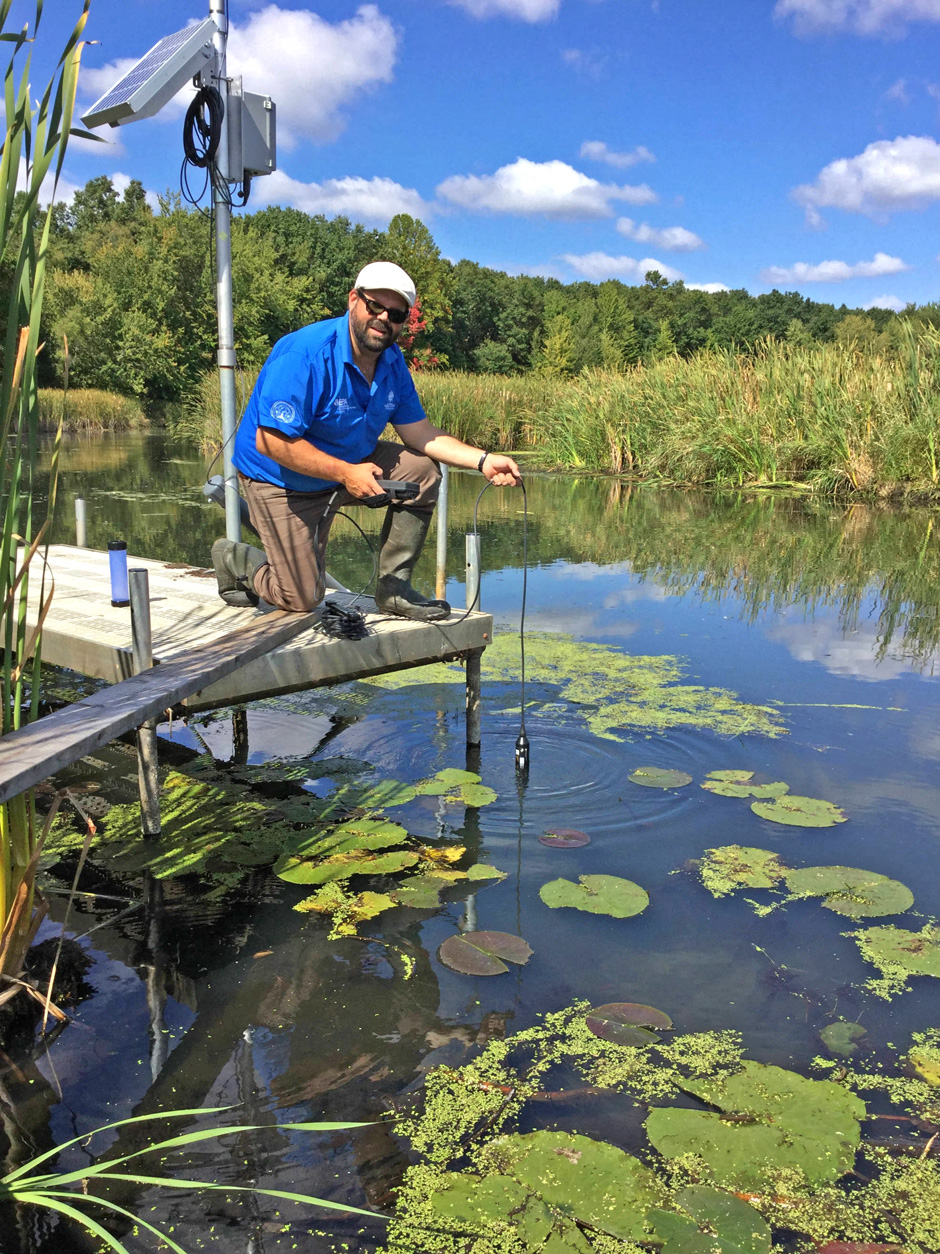
- a need to replace outdated equipment
- a danger of environmental conditions threatening cultural traditions
- a desire to plan for the future using new technology
- ability to react to water quality and protect land quickly, backed by evidence
The NexSens data logging system was a great choice for this case. The tribe upgraded the Water Program equipment to a YSI ProDSS, which utilizes EcoWatch Software.
“We more recently acquired a NexSens data logging system with a MAST wireless telemetry and a LIVE web data center,” says Kerney. “We also now have a Lufft WS601 Multi-Parameter Weather Sensor and an In-Situ Aqua Troll continuous water monitoring device.”
The system also collects weather data once or twice a month and performs diurnal monitoring.
Benefits: Staying clean and clear for less
Smaller and easy to manage for sampling in the field, the YSI ProDSS simplifies the calibration process and allowed a better digital interface. The dissolved oxygen (DO) level of the water is also of interest to the NHBP, and now that data is not just from spot-checking, the team is able to perceive daily variations in temperature and oxygen levels that previously went unnoticed.
“Now that we have telemetric capability, our data is much better,” says Kerney. “Installing the system required a bit of a learning curve, but now that we’ve got it up and running, it’s been great to have live data. Not only do I get a better picture of what is happening in the environment, it’s been helpful for engaging visitors and tribal members because they can look at the data for themselves.”
Result: Visualizing data and water quality trends
Kerney has worked hard to incorporate mapping to visualize data and water quality trends, and this new equipment makes that possible. These story maps anchor information with things like interactive maps, video, text, and illustrations to tell the story of a place, issue, trend or pattern placed within geographic context.
“Story maps are becoming widely used tools by Tribal and other governments to communicate to their citizens,” says Kerney. “We are using UAV videos to highlight beautiful aerial views of ecological restoration projects and the plentiful water resources of the Pine Creek Reservation.”
The tribe also uses the technology as it hosts interns in its Tribal Youth to Work Program, and from both Michigan State University and the University of Michigan.
“While an essential part of Tribal Lifeways up through the 19th century, the collection, processing and consumption of wild rice was nearly lost in recent times,” Kerney states. “The rice variety that grows near us, Zizania aquatica, is now a state threatened species, and the tribe has focused on understanding how this resource can once again grow on the reservation.”
Finally, NHBP in partnership with Bowling Green State University is investigating genetic differences in the wild rice populations throughout southwest Michigan.
“One of the issues we are interested in is climate change and how it has affected the tribe and will affect it in the future,” says Kerney. “Long term monitoring helps us understand climate trends. This, in turn, will help the tribe determine how lifeways will need to be adapted as climate changes over time.”
The bottom line
Sometimes it takes cutting edge technology to protect a precious resource—even if that resource is a tradition. NexSens monitoring equipment is custom-built for every client’s goals, and our team will continue to be here as you modify your systems and goals over the years.
Equipment
The YSI ProDSS (digital sampling system) provides extreme flexibility for the measurement of optical DO, turbidity, conductivity, pH, ORP, ammonium (ammonia), nitrate, chloride and temperature along with depth.
The YSI EXO represents the next generation of water quality instruments from YSI. The EXO1 sonde includes four sensor ports with internal data logging and battery power.
The Lufft WS601 Multi-Parameter Weather Sensor simultaneously measures air temperature, humidity, pressure, precipitation & wind in a compact platform with ventilated housing.
The NexSens X2 Environmental Data Logger offers the latest in real-time monitoring technology with wireless communication, large plug-and-play sensor library, and ultra-low power consumption.
The MAST is a 2″ NPT aluminum pipe assembly designed for mounting an X2 data logger and SP-Series solar power pack for quick deployment.
WQData LIVE is a web-based project management service that allows users 24/7 instant access to data collected from remote telemetry systems.

